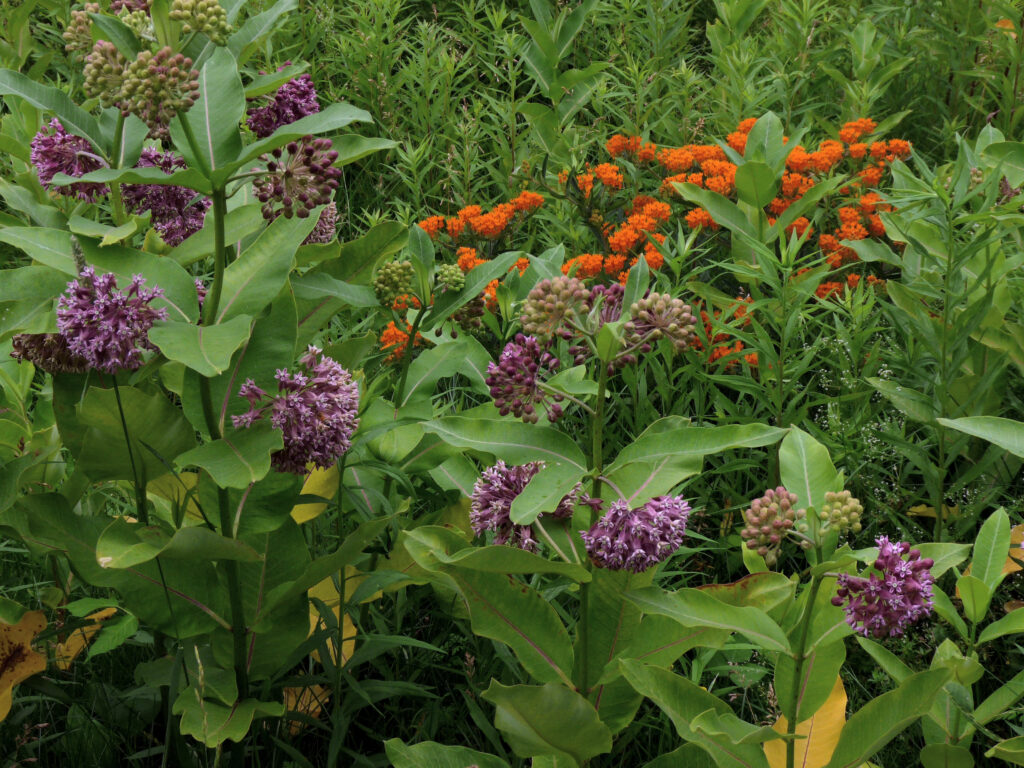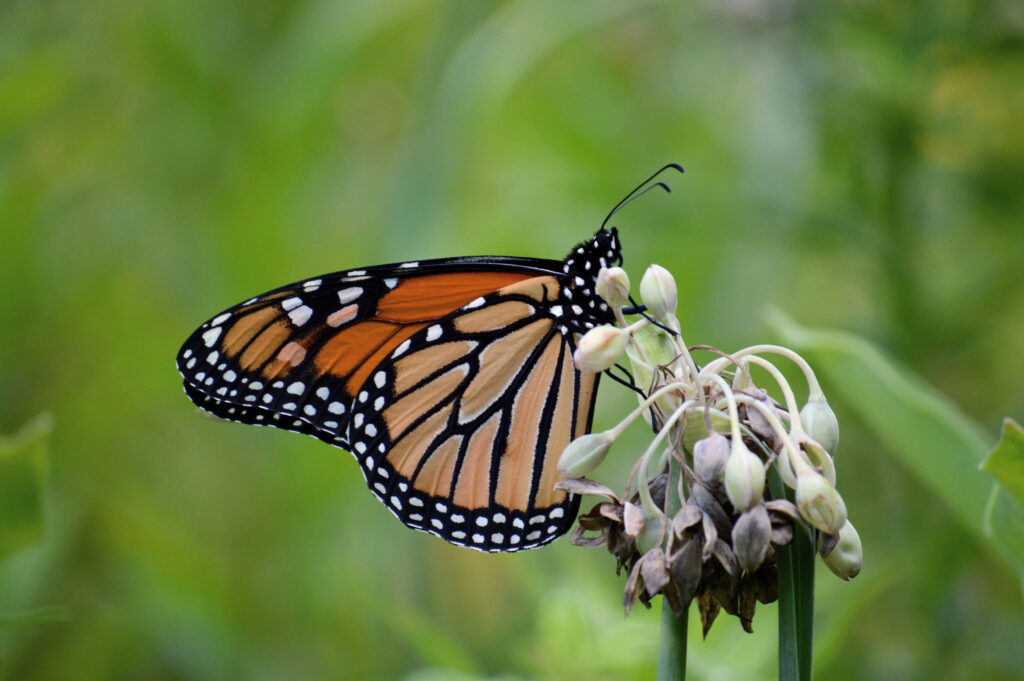Recently, the IUCN listed the status of the iconic migratory monarch butterfly (Danaus plexippus) to endangered. Monarch make their summer home at Highstead where their sole hostplant, native milkweed from the genus Asclepias grow in abundance. If you peek beneath a milkweed leaf or toward the top of the plant, you may find a monarch’s pinhead-sized egg attached by a secreted glue. This egg is one of 300-500 eggs laid over two to three weeks.

Asclepias are the only food source for the monarch butterfly larvae (caterpillars). As migratory monarch caterpillar chow down, they ingest the plant’s toxic chemical compounds (cardenolides) that will protect them as adults. The bright orange and black-striped wings they wear are concentrated with the poison and serve as a warning to potential predators while monarch pollinate milkweed and other native plants.

The monarch’s time at Highstead is only one-half of its life story. The last generation of metamorphosized monarch butterflies may live up to 8-9 months and will spend up to 2 months on an almost 3,000-mile journey to their overwintering grounds in Mexico.
The population in and around the Monarch Butterfly Biosphere Reserve in Mexico is surveyed by the acreage of forest in which the butterfly colonies hibernate and overwinter. Their presence has grown from 2.10 hectares (5.19 acres) in December 2020 to 2.84 hectares (7.02 acres) in December 2021. Despite this growth, these numbers indicate a sharp decline from 1993-2001, when the average area occupied in Mexico was 8.7 hectares (21.5 acres).
Ongoing threats to the population include increased legal and illegal logging of overwintering forest habitat for agriculture and development, pesticides and herbicide application across monarch ranges, climate change, a loss of nectar source plants along migration routes, and milkweed habitat loss.
Are you interested in expanding opportunities for the monarch and increasing the biodiversity of your landscape? Planting local milkweed species native to your area is best. USDA Plants provides a list of the most frequently used milkweed species by monarchs in Eastern North America.

References
https://www.fs.fed.us/wildflowers/pollinators/Monarch_Butterfly/habitat/milkweed_list.shtml
https://tellus.ars.usda.gov/stories/articles/which-milkweeds-do-monarch-butterflies-prefer/
https://www.fs.fed.us/wildflowers/pollinators/Monarch_Butterfly/habitat/
https://www.wm.edu/news/stories/2018/at-the-symposium-insights-into-the-monarch-milkweed-relationship.php
https://monarchconservation.org/wp-content/uploads/2022/05/Monarchs-Winter-Population-21-22.pdf
https://www.fs.fed.us/wildflowers/pollinators/Monarch_Butterfly/biology/index.shtml
https://www.fs.fed.us/wildflowers/pollinators/Monarch_Butterfly/migration/
https://www.iucn.org/press-release/202207/migratory-monarch-butterfly-now-endangered-iucn-red-list
https://www.iucnredlist.org/species/159971/806727